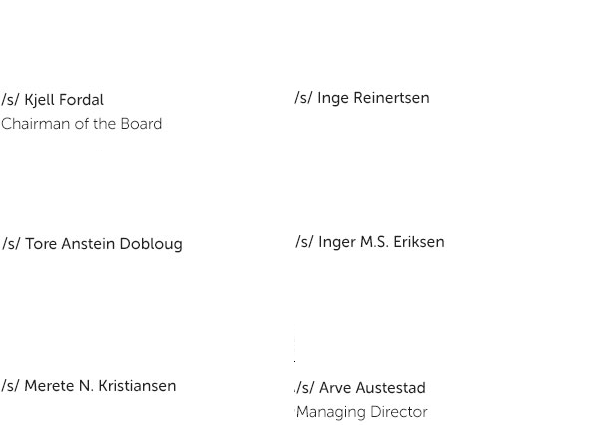Boligkreditt Annual Report 2015
Statement of the board of directors
Cover pool and outstanding covered bonds 1
1 The cover pool consists of residential mortgages and liquid, highly rated assets (substitute assets). Covered bonds are shown inclusive of the market value of the derivatives deployed to hedge currencies and interest rates.
Key figures
| Q4 2015 | Q3 2015 | Q2 2015 | Q1 2015 | |
|---|---|---|---|---|
| Weighted Average Current LTV (%) | 52,1 % | 50,3 % | 49,2 % | 50,5 % |
| Weighted Average Original LTV (%) | 58,7 % | 58,3 % | 58,2 % | 57,3 % |
| Average Loan Balance (NOK) | 1 251 680 | 1 221 414 | 1 201 505 | 1 199 658 |
| Number of Mortgages in Pool | 134 895 | 135 688 | 133 422 | 136 032 |
| Pct. of non first-lien mortgages | 0,0 % | 0,0 % | 0,0 % | 0,0 % |
| Overcollateralization | 110,4 % | 111,2 % | 111,5 % | 111,3 % |
Key developments in the fourth quarter and in 2015
SpareBank 1 Boligkreditt issued covered bonds in 2015 for a total of 36.9 billion kroner, including two bonds issued in EUR (September and November) for a total of 23.4 billion kroner (63 per cent of the issuance volume) and the remainder in Norwegian kroner.
The residential lending volume has increased moderately as expected by 5.2 per cent over 2015. This must be seen in connection with a moderate growth in the lending activities of the parent banks and an increase in the same banks’ deposit base, and the establishment of a wholly-owned covered bond issuer for SpareBank 1 SR-Bank which has produced a drop in the volume of loans that this bank has sold to the Company. For 2016 the forecast is for growth in the Company’s residential mortgage lending volume of between 5 and 6 per cent.
Boligkreditt is well capitalized with a capital coverage ratio of 16.09 per cent measured against a requirement of 14.5 per cent, which incerases to 15.0 per cent from Jul 1, 2016. Core equity capital is 12.73 per cent against a requirement of 10.0 per cent. These figures reflect that Boligkreditt has implemented a new capital coverage calculation according to CRD IV.
In the market for the Company’s bonds the credit spreads have generally widened through the second half of 2015, from historically low levels prior to the summer. This is in keeping with the market development both in EUR and NOK. In the latter instance, there are probably a few reasons for the widening, but a significant reason is to be found in that the spread for entering into basis (currency) swaps from EUR to NOK has widened.
The Norwegian krone was also in 2015 under pressure, probably because the price of oil has reduced significantly.
Norwegian Central Bank exchange rate, monthly average NOK/EU
The currency depreciation has the effect that SpareBank 1 Boligkreditt receives more collateral in the form of cash or bonds from swap counterparties according to the ISDA/CSA agreement which the Company has entered into. This increases the balance sheet materially as of December 31, 2015 because the derivatives are accounted for at fair value as an asset while the stock of liquid assets which increases when collateral is posted also goes up (assets and liabilities increase)
The Company is maintaining separate accounts for liquid assets posted to it a s collateral and for assets which is a part of the Company’s own liquidity portfolio.
Nature and development of the Company’s business
SpareBank 1 Boligkreditt AS is a credit institution licensed by the Norwegian Financial Services Authority (Finanstilsynet) and is operated according to the legislation for covered bond issuers in Norway which is included in the law regarding financial enterprises (“Finansieringsvirksomhetsloven”) chapter 2, section IV and the detailed regulations thereof.
The purpose of the Company is to provide funding for the owners by buying residential mortgage loans with a loan-to-value (“LTV”) of up to 75 per cent and financing these primarily through the issuance of covered bonds 2. The Company which is based in Stavanger, is owned by banks which are members of the SpareBank 1 Alliance. A comprehensive agreement is signed which each of the banks in the SpareBank 1 Alliance which are selling mortgages to the Company regarding the purchasing process and the obligations which the banks owe the Company and its mortgage customers (“Transfer and Servicing Agreement”, “TSA”).
The Company’s issuances of covered bonds mainly take place under the EUR 25,000,000,000 Global Medium Term Covered Note Programme (GMTCN Programme). This Programme was updated on April 23, 2015 and is available at the Company's home page: https://spabol.sparebank1.no.
One or more credit ratings from international rating agencies are important in order to be able to issue covered bonds. The Company have procured the services of Moody’s Ratings Service and Fitch Ratings to evaluate the credit quality of the issuances under the GMTCN Programme. The bond ratings are Aaa from Moody’s and AAA from Fitch.
2 The issuer's own criteria for which loans will qualify for the cover pool include a maximum LTV requirement of 70 per cent for new residential mortgages from the end of the first quarter 2014.
Annual accounts
The annual accounts have been prepared in accordance with the International Reporting Standards (IFRS) as adopted by the EU and published by the International Reporting Standards Board (IASB).
The Board views the accounts as presented to be a true representation of SpareBank 1 Boligkreditt’s operations and financial position at the end of the year. Numbers in brackets refer to the previous year for comparison.
The total balance sheet at year-end 2015 amounts to 269 (228) billion kroner. The increase is due to that residential mortgages increased by approximately 8 billion kroner, an increased requirement for liquid assets due to maturities in 2016 by 12 billion kroner, in addition to an increase in the value of the derivatives and posted collateral as described above. The Company had in 2015 net interest income of 407 (355) million kroner, considering also commissions paid to the parent banks. The cost of opertaions for the year was 33.1 (33.3) million kroner including depreciaton and amortization. No additional amounts have been charged as loan provisions (write offs) in 2015 beyond the approximately 8 million kroner which has been reserved from previous years. No actual loan losses have occurred since the Company commenced operations. This produces an operating result of 608 (284) million kroner before tax. The operating result includes a gain due to basis swap valuation adjustments of 467 million kroner. This is reversed over time until maturity of the swaps.
Lending to customers amounted to 169 (161) billion kroner as of 31.12.15. Even though some mortgage loans have been sold back to the Company’s parent banks during the year as a part of normal operations, there has been an expected though moderate increase of mortgage loans during the year. The Company’s own liquid assets as of December 31, 2015 were 21.8 (9.5) billion kroner.
Risk aspects
SpareBank 1 Boligkreditt as an issuer of covered bonds is subject to strict rules regarding its exposure to credit, market, and liquidity risks. This fact and the aim of the maintenance of the AAA/Aaa rating means that the Company is subject to low levels of risk and places strong emphasis on risk control.
Credit Risk is defined as the risk that losses can occur as a consequence of that customers and others do not have the ability or willingness to meet their obligations to SpareBank 1 Boligkreditt. Because the Company buys residential mortgages within 75% of the value of the objects on which the mortgages are secured, the Board of Directors conclude that the credit risk is lower than for banks in general.
Market risk is defined as the risk of losses due to changes in market rates, i.e. interest rates, exchange rates and the prices of financial instruments. At the end of the year SpareBank 1 Boligkreditt AS had issued bonds for approximately NOK 119 billion kroner in euros, 41 billion kroner in US dollars and 0.3 billion kroner in Swedish kroner. All borrowing and investments with a fixed rate and all borrowing and investments in a foreign currency have been hedged by financial currency- and/or interest rate swap agreements or through natural hedges. The collective cash flow therefore matches to high degree borrowings in Norwegian kroner with floating rate conditions (NIBOR 3 months). The Company receives collateral from its counterparties in derivative agreements according to certain criteria.
SpareBank 1 Boligkreditt AS owns bonds and treasury bills at year-end for a total of NOK 58.8 (36.6) billion kroner, whereof 37.0 (27.1) billion kroner is collateral received from counterparties in derivatives transactions and are no available for the Company as liquid assets. The bonds are mainly Nordic covered bonds and German supra sovereign and agencies (German agencies guaranteed by the German government) with a triple-A rating from Fitch, Moody's or S&P. Deposits are placed in banks with a minimum rating of at least A/A2.
The Company had as of 31.12.2015 only moderate interest rate risk and immaterial amounts of currency risk.
Liquidity risk is defined as the risk that the Company is not able to meet its obligations at maturity or to be able to finance the purchase of loans at normal terms and conditions. Liquidity risk is managed based upon a liquidity strategy approved by the Board. According to the strategy, SpareBank 1 Boligkreditt AS shall maintain a material liquidity reserve with a minimum size of covering all maturities within 6 months and 50 per cent of all maturities between 6 and 12 months. Additionally the Company shall at any point in time be able to meet its interest payments, including derivatives, which come due in the next three months under a scenario where no interest payments are received from the loan portfolio. SpareBank 1 Boligkreditt AS’s liquidity situation is good.
Operational risk is defined as risk of loss due to error or neglect in transaction execution, weakness in the internal control or information technology systems breakdowns. Reputational, legal, ethical and competency risks are also elements of operational risk. The risk is assessed to be moderate.
The Company spends much time identifying, measuring, managing and following up central areas of risk in such a way that this contributes to meeting the strategic goals. The notes 24 to 26 in the annual report provides further information.
Employees and the working environment
SpareBank 1 Boligkreditt had eight employees as of 31.12.2015. The Company employs six males and two females.
SpareBank 1 Boligkreditt AS has a Transfer and Servicing Agreement with each shareholder bank which is handling the customer contact and servicing the mortgage portfolio on behalf of the Company. In addition, the Company purchases a significant amount of its support functions from SpareBank 1 SR-Bank ASA, e.g. accounting, HR and IT functions as well as finance related back-office functions.
The working environment is characterised as good and there is no pollution of the physical environment. There has been 0.2% employee absence recorded in 2013 due to sickness. No workplace accidents which might have resulted in property and/or damage to any persons have occurred or been reported during the year.
The Board consists of five persons of which three are male and two are female. SpareBank 1 Boligkreditt AS strives to achieve an even distribution between the genders in recruiting for the staff and the Board.
At the establishment of SpareBank 1 Næringskreditt AS which represents a similar type of business activity to that of SpareBank 1 Boligkreditt AS, it was decided that the two companies will have identical staffing. Of the eight full time employees which in 2013 have been employed in SpareBank 1 Boligkreditt AS, 1.6 full time equivalents have been allocated to SpareBank 1 Næringskreditt AS. The Boards of the two companies have joint meetings, where the members associated with one of the companies take the role of observers when matters of the other Company are discussed.
Corporate governance
SpareBank 1 Boligkreditt’s principles for corporate governance is based on the Norwegian accounting law and regulations and the Norwegian practice for corporate governance.
The Board of Directors has appointed an audit committee which evaluates the Accounts inclusive of the Notes to the Accounts. The Board of Directors reviews the financial reporting processes in order to contribute to a culture which maintains a focus on quality and accuracy of this work. Boligkreditt seeks to deliver through its financial accounting relevant and timely information which can be compared over time to constituents in the SpareBank 1 Alliance, regulatory authorities and participants in the capital markets. The Board evaluates and approves Management’s proposed annual and quarterly financial accounts.
Boligkreditt maintains an administration which is suitable for the purposes, activities and extent of the business. The Management routinely evaluates internal procedures and policies for risk and financial reporting including measuring the results and effectiveness of the procedures and policies. Any breaches in the policy and procedures are reported continuously to the Board of Directors. Management is also responsible for following up and implementing actions, recommendations and new rules from the regulatory authorities.
The Company publishes its Corporate Governance policies in a document available on the Company’s website www.spabol.no. With regards to that the Company has a single purpose and that the shares are not freely tradeable nor listed on an exchange it is the Company’s opinion that any deviations to the policies are immaterial.
Shareholders
According to the Articles of Association 2 “The shares can only be owned by banks under contract with the Company for managing the Company’s lending funds.” Entering into such agreements is decided by the Board or the General Meeting.
Neither the Company nor employees own shares in the company. A shareholders agreement which all shareholders and the Company are parties to, it is agreed that the Company’s shares will be reallocated at least annually and in relation to the mortgage volume transferred to the Company by each shareholder. The shareholders are obliged to vote for any possibly private placements to new banks that have transferred mortgages to the Company. In case of a rights issue, the shareholders are obliged to subscribe shares according to its share of the shareholdings.
The Company is not party to agreements which come into force, are amended or terminated as a result of a takeover bid.
Social responsibility
SpareBank 1 Boligkreditt is an issuer of covered bonds and has, despite the size of its balance sheet, a very limited activity.
The nature of the business consists of buying mortgage loans from its shareholder banks in the SpareBank 1 Alliance, and to finance this activity by issuing covered bonds. The owner banks have meaningful roles as pillars of society in their regional areas, and we make a reference to the annual accounts of the banks for a closer description of the social responsibility of SpareBank 1. The Company thus chooses not to maintain special guidelines and principles tied to social responsibility.
Future prospects of the Company
SpareBank 1 Boligkreditt's future prospects stable and good. Residential real estate prices (the residential real estate index from Eiendom Norge) increased by 5.1 per cent from December 2014 to December 2015.
This is a somewhat surprising strong growth (albeit lower than in 2014, given the decline in the price of oil and the petroleum sector significance for the Norwegian economy (approximately 20 per cent of total GDP). Some of the reason for this growth can be found in lower mortgage rates through all of 2015 both because of increasing competition in the banks market but also because the Norwegian central bank reduced its monetary policy rate twice during the year. At the same time, residential real estate prices in the region most tied to the oil industry were lower at the end of the year than at the beginning.
The average loan to value in the Company’s portfolio of mortgage loans is stable at approximately 50 per cent and there are no incurred losses and no loans with a delayed payment of more than 60 days (the number of loans with a delayed payment of between one and two months is 0,01 to 0,02 per cent of the portfolio). The unemployment rate remains at a low level in an international context of 4.6 per cent (an increase from 3.7 per cent from November 2014) according to Statistics Norway. Even if the unemployment rate has increased, it may also continue to do so in 2016, as there is uncertainty tied to this development at the beginning of the year. Despite of this development, the Company does not take the view that the mortgage loans in the cover pool, which have a low loan to value and are subject to strict quality criteria, have a heightened risk profile. The portfolio is well diversified geographically all over Norway. The country is structurally well equipped to mitigate and counterbalance and increase in unemployment, unemployment insurance is generous and monetary policy and the interest rate level generally is expected to decrease if unemployment keeps rising.
Lending growth for residential purposes in the SpareBank 1 banks is moderate. A further moderate development is expected in 2016 for residential loans in the cover pool. Both the average customer interest rate (3.62 per cent in December 2014 to 2.75 per cent in December 2015) and Boligkreditt’s funding costs (2.37 per cent in December 2014 to 1.88 per cent in December 2015) have reduced during 2015, which reduces the margin. The margin remains at a high level in a historical context. The market for covered bonds now indicate a similar credit spread for new issuances as historical average spreads. Funding costs are also dependent on the 3 month NIBOR rate, and this has been volatile over 2015, though the level has remained relatively stable in the final quarter of the year.
Macroeconomic development:3
GDP for mainland Norway increased by 0.1 per cent in the fourth quarter from the 3rd quarter 2015. The GDP growth rate for all of 2015 was a modest 1.0 per cent. This reflect the moderate growth Norway has experienced in the last 18-24 months and it is the year of the weakest growth since 2009. The household sector total consumption expense increase by 2.0 per cent for the year, a relatively robust figure. The previously strong growth in oil investments have provided significantly negative growth impulses since the third quarter of 2014 and this is likely to continue as long as the oil price does not stabilize at a higher level than today (approximately USD 30 per barrel in January 2016). Mainland investments in total increased by 0.2 per cent in 2015 (buoyed by public sector, residential housing and some goods production), while oil investments declined 14.7 per cent and in all for industry on the mainland the investment reduction was 2.8 per cent. Generally, it is increases in public investment and consumption as well as housing investments together with exports which brings about GDP growth. Both the goods- and service exports show a relatively strong growth, probably due to a weaker krone and therefore the possibility of offering better prices.
3 Macroeconomic prospects and forecasts have been sourced from Statistics Norway as of December 1, 2015 and February 16, 2016.
Economic outlook:A low exchange rate continues to provide positive impulses and growth possibilities for Norwegian exports in 2016, but will also be impacted by economic growth internationally, which, even if expected better in the Eurozone, remains moderate. A significant increase in public demand and a return to growth in the mainland industries are the important contributors to activity growth in the time ahead. The government budget will remain in an expansive mode for a few years, but more so in 2016 than in the following years when the oil price is again expected to increase. Despite the low interest rates, the change in real estate prices nationally is forecasted to be only 1.5 per cent in 2016 because the unemployment rate is expected to increase some from the level as of the end of 2015, before it returns to 4.6 per cent at the end of 2016.
| Forecast (%) | 2015 | 2016 | 2017 | 2018 |
|---|---|---|---|---|
| Mainland GDP growth | 1,0 | 2,0 | 2,6 | 2,7 |
| Unemployment rate | 4,6 | 4,6 | 4,4 | 4,3 |
| CPI growth | 2,3 | 2,8 | 2,1 | 1,6 |
| Annual wages | 2,8 | 2,6 | 2,5 | 2,9 |
The Board of Directors affirms that the financial accounts present a correct and complete picture of the Company’s operations and financial position for 2015. The financial accounts including notes thereto are produced under the assumption of a going concern. 105,1 million kroner of the annual net income will be distributed as a dividend to the shareholders. This corresponds to 1.84 kroner per share.
There have been no incidents of a material nature after year-end which are expected to impact the annual accounts for 2015.
Stavanger, 31. December 2015 / Tromsø, 1. March 2016
The Board of Directors of SpareBank 1 Boligkreditt AS

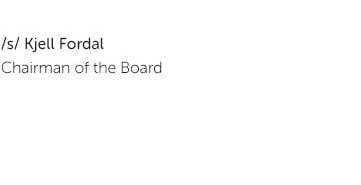

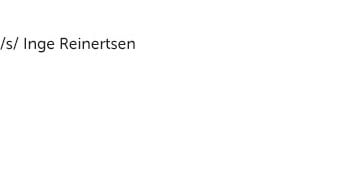

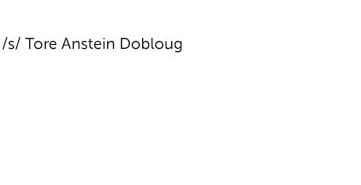
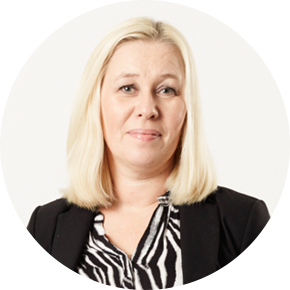


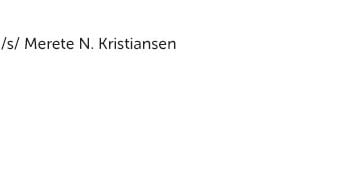

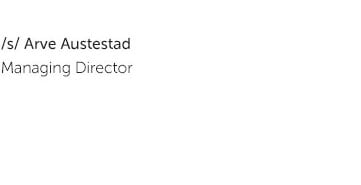
SpareBank 1 Boligkreditt AS
- Statement of the members of the board and the chief executive officer
The Board and the chief executive officer have today reviewed and approved the financial accounts for 2015 for SpareBank 1 Boligkreditt AS. The annual accounts have been prepared in accordance with the International Financial Reporting Standards (IFRS), as adopted by the EU.
To the best knowledge of the board and the chief executive officer the accounts have been prepared in accordance with applicable accounting standards and give a true and fair view of the assets, liabilities, financial position and profit or loss of the company taken as a whole as of 31.12.15.
The board of directors and the chief executive officer declare to the best of their knowledge that the annual report gives a true and fair view of the development and performance of the business of the Company, as well as a description of the principal risks and uncertainties facing the Company.
Stavanger, 31. December 2015 / Tromsø, 1. March 2016
Members of the board, SpareBank 1 Boligkreditt AS
